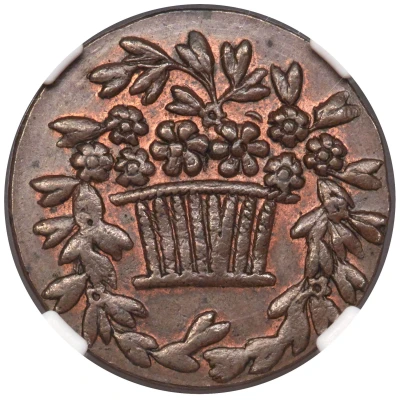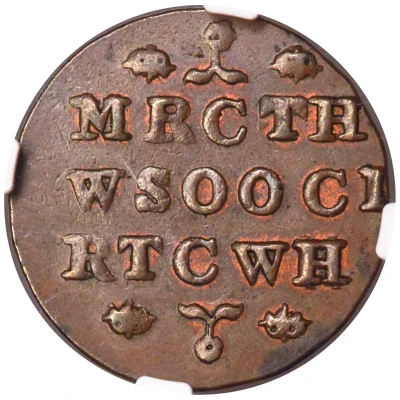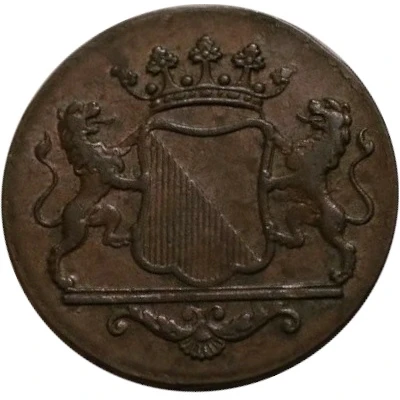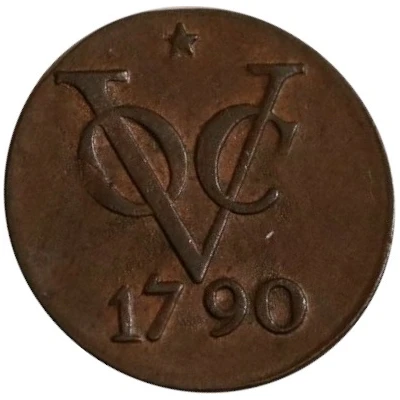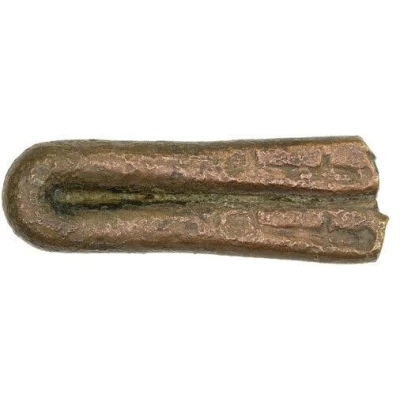
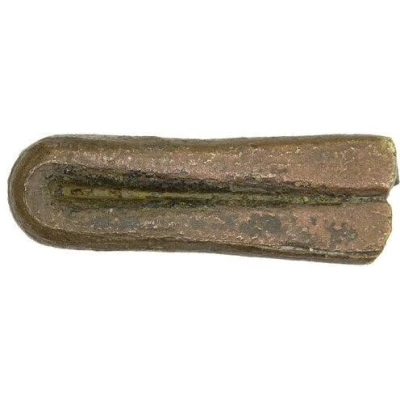

1 Tang Larin ND
| Copper | 5.38 g | - |
| Issuer | Indonesia › Netherlands East Indies (1601-1949) |
|---|---|
| Period | United East India Company (1602-1800) |
| Type | Standard circulation coin |
| Years | 1658-1660 |
| Value | 2 Duits (1⁄48) |
| Currency | Gulden (1726-1854) |
| Composition | Copper |
| Weight | 5.38 g |
| Size | 28 × 9 mm |
| Thickness | 4 mm |
| Shape | Other (Hairpin larin) |
| Technique | Hammered |
| Demonetized | Yes |
| Updated | 2024-10-05 |
| Numista | N#425190 |
|---|---|
| Rarity index | 95% |
Reverse
Blank.
Comment
Size and weight variable, with known examples ranging from about 5.3 to 7.2 grams.
In response to growing unrest caused by a shortage of small copper coins, the VOC authorities in Batavia authorised (by a decree of 9 November 1658) the minting of an emergency issue in the shape of a larin, a very popular silver coin produced in Iran, India, the Ottoman Empire, Sri Lanka, and the Maldives, and frequently traded to the Netherlands East Indies. It was referred to as a ‘tang’ but also was known as a ‘larijn’, and was valued at 2 duits. To avoid clipping, both ends of tang/larijn were stamped with the emblem of the city. However, the copper was very difficult to work with, and the master swordsmith in Batavia, who was charged with producing the coins, found the production process too difficult. As a result, the copper tang was replaced with a tin version from 28 May 1660.
Interesting fact
One interesting fact about the 1 Tang (Larin) coin from Indonesia › Netherlands East Indies (1601-1949) is that it was made of copper, which was a common material used for coinage during that time period. Copper was chosen for its durability and resistance to corrosion, making it an ideal material for coins that were meant to be used extensively in trade and commerce. The use of copper in coinage also made it easier for people to recognize and authenticate the coins, as copper had a distinct color and weight that was easily identifiable. Additionally, copper was relatively inexpensive and abundant, making it a cost-effective option for minting coins. Overall, the use of copper in the 1 Tang (Larin) coin reflects the practical and functional considerations that went into the design and production of currency during that time period.
